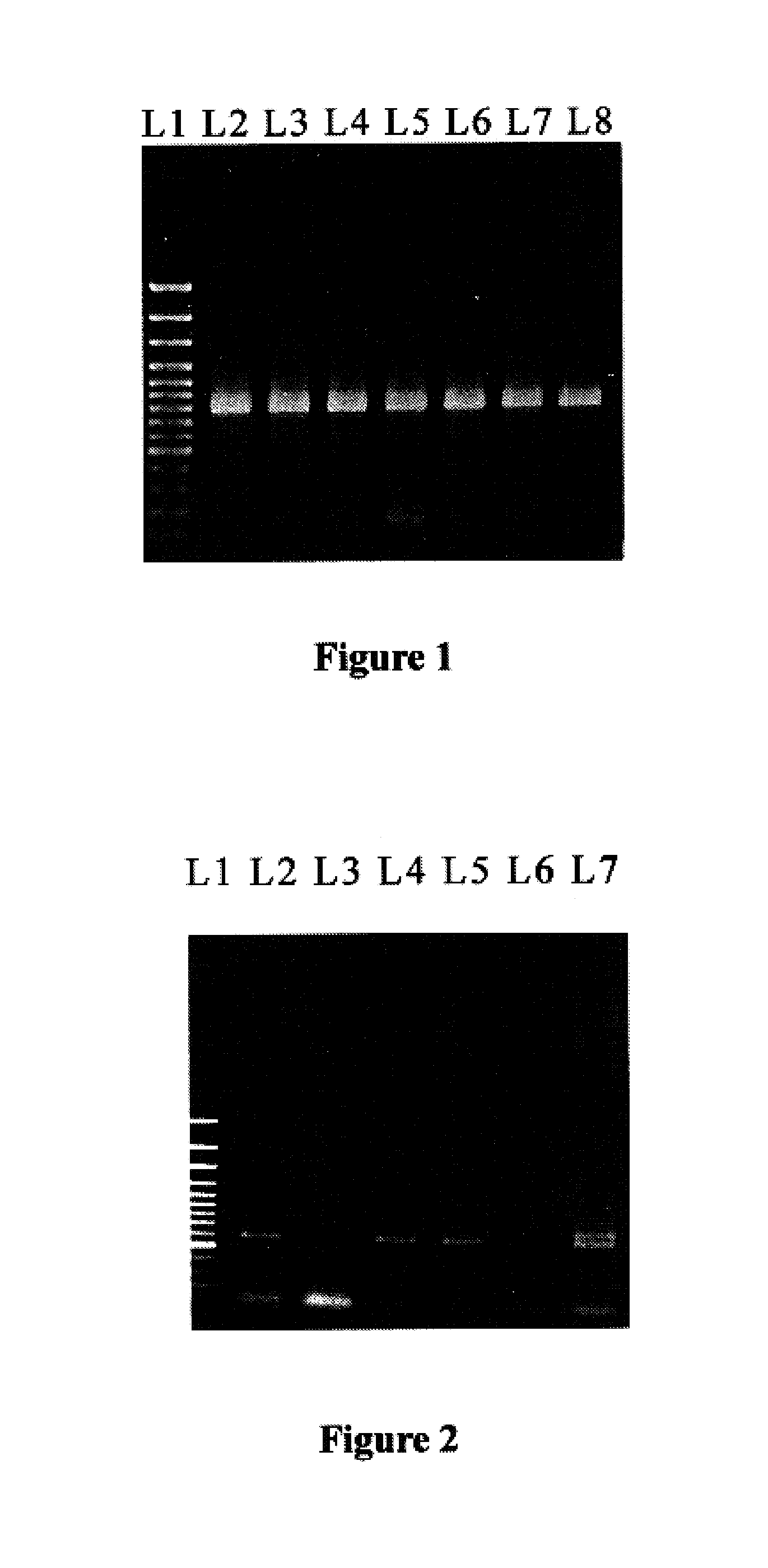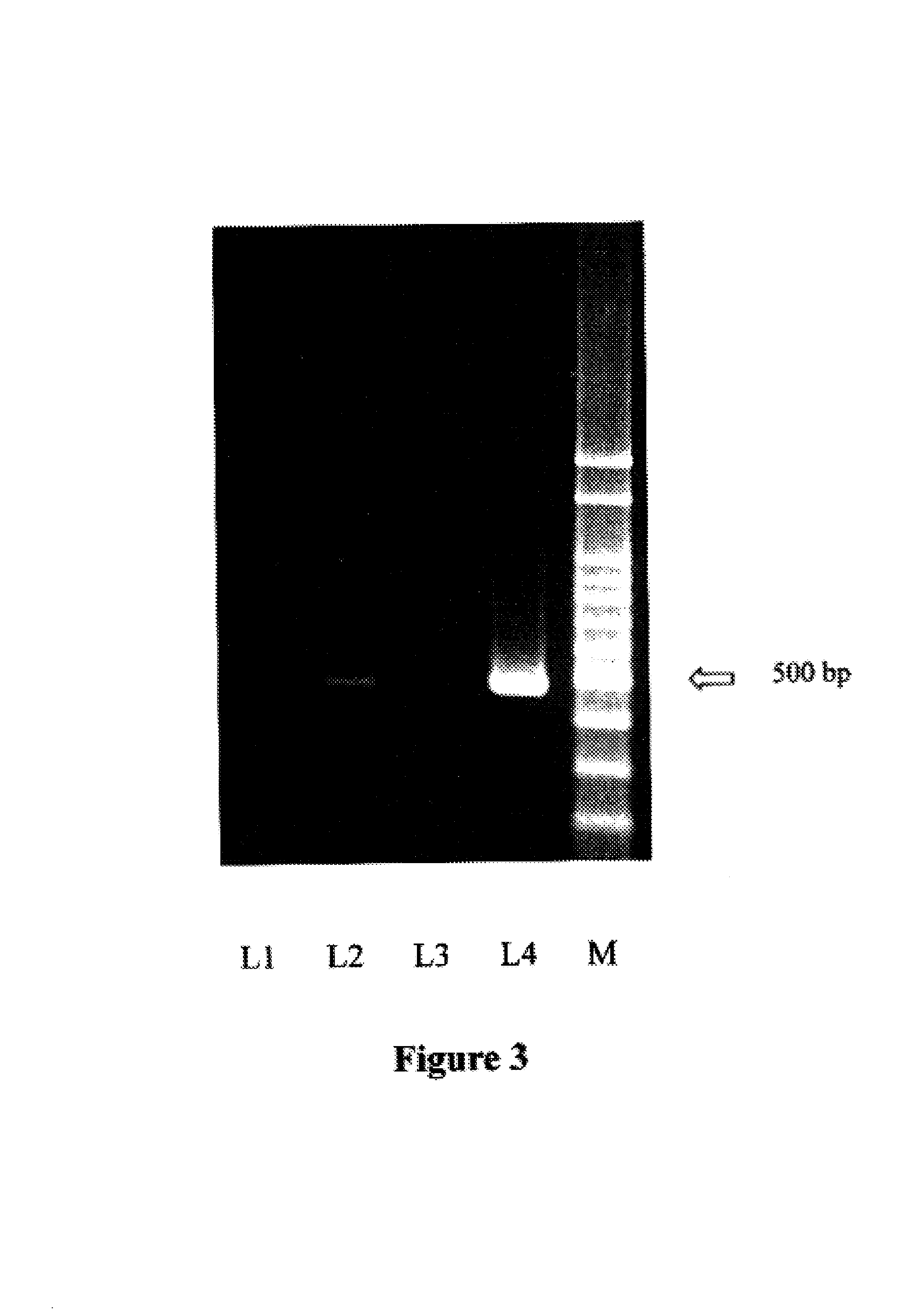Method of marking solid or liquid substances with nucleic acid for anti-counterfeiting and authentication
a technology of nucleic acid and solid or liquid substances, applied in the direction of identification means, seals, instruments, etc., can solve the problems of easy imitation and destruction of labels, inability to dissolve nucleic acid, and inability to maintain labeling, so as to increase miscibility, increase miscibility, and little difference
- Summary
- Abstract
- Description
- Claims
- Application Information
AI Technical Summary
Benefits of technology
Problems solved by technology
Method used
Image
Examples
example 1
Mixing DNA with Polystyrene (PS)
[0032]5 μg of prepared DNA is dissolved in 100 μl of distilled water to form a DNA solution. 5 g of PS is dissolved in 50 ml chloroform to a concentration of 10% (w / v). 10 μl of 95% ethanol and acetone, as intermediate solution, are added respectively to the DNA solution. Then, DNA solution containing the intermediate solution is mixed homogeneously with the PS / chloroform solution through vigorous vortex. Through such intermediate process, water-soluble DNA solution and water-insoluble medium of PS / chloroform solution are mixed completely to form a homogenous medium containing desired DNA.
example 2
Marking Plastic Films with Synthesized DNA Taggants for Anti-counterfeiting and Authentication
[0033]Synthesized DNA of 800 bp is dissolved in 95% ethanol and acetone in equal amount and mixed with polycarbonate / chloroform solution as mentioned above. A plastic film is spread with the homogenous medium containing desired DNA and air-dried. After drying, the plastic film is placed in the dark, or at 4° C. Alternatively, the plastic film is exposed to sunlight for one day before recovery. For recovery, a small piece of the plastic film is dissolved with chloroform. TE buffer is added and mixed well with the dissolved plastic film in chloroform and then centrifuged. The supernatants are collected and served as the templates for PCR. PCR products are then analyzed by electrophoresis and stained with EtBr. As indicated in FIG. 1, samples labeled with DNA taggants show a clear band of 800 bp on the gel. From left to right, L1 is the standard 100 bp DNA ladder. L2 is PCR products amplified ...
example 3
Marking Plastic Films with Human White Blood Cell (WBC) DNA Taggants for Anti-Counterfeiting and Authentication
[0034]The extracted Human WBC DNA is dissolved in 95% ethanol and equal amount of acetone and then mixed with polycarbonate / chloroform solution as mentioned above. The plastic film is spread with the homogenous medium containing desired DNA and air-dried. After drying, the plastic film is placed in the dark, or at 4° C. Alternatively, the plastic film is exposed to sunlight for one day before recovery. For recovery, a small piece of the plastic film is dissolved with chloroform. TE buffer is added and mixed well with the dissolved plastic film in chloroform and then centrifuged. The supernatants are collected and served as the templates for PCR. PCR products are then analyzed by electrophoresis and stained with EtBr. As indicated in FIG. 2, samples labeled with Human WBC DNA taggants show a clear band of 600 bp on the gel. From left to right, L1 is the standard 100 bp DNA l...
PUM
 Login to View More
Login to View More Abstract
Description
Claims
Application Information
 Login to View More
Login to View More - R&D
- Intellectual Property
- Life Sciences
- Materials
- Tech Scout
- Unparalleled Data Quality
- Higher Quality Content
- 60% Fewer Hallucinations
Browse by: Latest US Patents, China's latest patents, Technical Efficacy Thesaurus, Application Domain, Technology Topic, Popular Technical Reports.
© 2025 PatSnap. All rights reserved.Legal|Privacy policy|Modern Slavery Act Transparency Statement|Sitemap|About US| Contact US: help@patsnap.com


